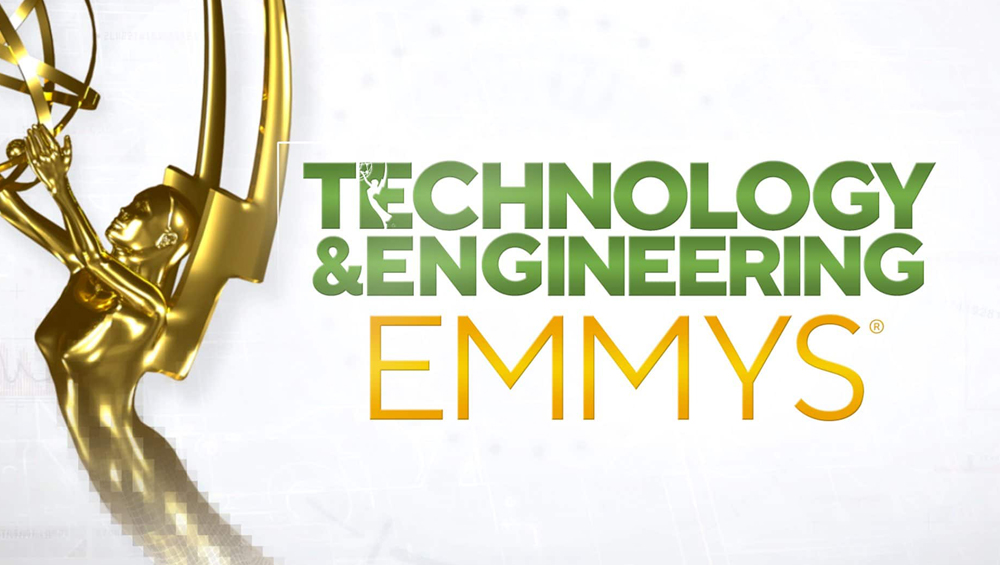
NATAS Reveals Technology & Engineering Emmy Winners

The National Academy of Television Arts & Sciences (NATAS) has announced the recipients of the 73rd Annual Technology & Engineering Emmy Awards. The ceremony will take place at the Wynn Encore Ballroom in partnership with the National Association of Broadcasters (NAB) as part of this year’s NAB Show in Las Vegas on April 25.
“The Technology & Engineering Emmy Award was the first Emmy Award issued in 1949 and it laid the groundwork for all the other Emmys to come,” said Adam Sharp, NATAS CEO-president. “We are extremely happy about honoring these prestigious companies, again in partnership with NAB, where the intersection of innovation, technology and excitement in the future of television can be found.”
“As we award this latest class of technology Emmy Awards, it is amazing to look back at all the innovation that our industry has driven in increasingly short periods of time,” said Joe Inzerillo, co-chair, NATAS Technology Achievement Committee. “This latest group typifies that spirit.”
“This year’s awarded categories and companies are a testament to the technological innovation we continue to see in the delivery, consumption and monetization of television,” said Dina Weisberger, co-chair, NATAS Technology Achievement Committee.
The Technology & Engineering Emmy Awards are awarded to a living individual, a company, or a scientific or technical organization for developments and/or standardization involved in engineering technologies that either represent so extensive an improvement on existing methods or are so innovative in nature that they materially have affected television.
A committee of highly qualified engineers working in television considers technical developments in the industry and determines which, if any, merit an award.
The evening’s host will be New York Times and CBS Sunday Morning journalist, David Pogue. And joining the line-up will be the legendary Las Vegas headliner as well as TV, film and Broadway star, Rich Little, who will be presenting the Pioneers awards that acknowledge those whose advancements in technology that are use today in television, but were created prior to Emmy consideration in their fields.
The individuals and companies that will be honored at the event follow.
Video & Audio Search based on Index Feeds coming from Mutiple Sources
- Shadow TV
In Camera Sensor and Software Stabilization
- Go Pro
- Socinext
Correlated Double Sampling for Image Sensors
- Marvin H. White
- Northrop Grumman Mission Systems Group
Pioneering Development of an Image-Sensor Array with Buried-Photodiode Structure
- Peter J. W. Noble
Standardization of Font Technology for Custom Downloadable Fonts and Typography for Web and TV Devices
- MPEG
- W3C – WebFonts Working Group
Common Key Technology of OTT Content
- Apple
- MLB Advanced Media
- Microsoft
- Netflix
Development of the Event Scheduling and Notification Interface (ESNI)
- Cable Labs
- OATC
- SCTE
Cloud Enabled Remote Editing and Project Management
- Arvato Systems Group
- Editshare
- Primestream (Ross)
Pioneering Development of Technologies to collect granular linear TV Viewership Data including STBs, ACR, Connected TV’s for Measurement, Marketing & Advertising
- Bell South
- Cablevision
- DirectTV
- NCM Solutions
Standardization of HTTP Encapsulated Protocols
- Apple
- MLB Advanced Media
- MPEG
- 3GPP
Management of IP Multicast Video Distribution to Deskstops and TVs in News & Media Production Facilities
- Haivision
- Vitec
2021 Television Technology Pioneers
The Scope of the Television Technology Pioneers is to recognize historical individuals whose work has materially affected television but has not been recognized by a NATAS Technology & Engineering Emmy Award.
Maurice Leblanc has been inducted as a Television Pioneer for the first suggestions of color TV and the use of the cathode-ray tube. For the first patent for complex television system, Paul Nipkow has also joined this celebrated group.
Maurice Leblanc: After studying electrical engineering and working on railway projects, Leblanc established his own company. On Nov. 2, 1880, he submitted a paper, “Study of the electrical transmission of luminous impressions,” to the French journal La Lumière électrique (Electric Light). In it, he outlined the principles of television and was probably the first to suggest color images (based on a beam-splitting prism) and the first to suggest the use of a cathode-ray tube (CRT) in the display. He also suggested vibrating mirrors for camera scanning and a variable-aperture modulator. Many of his suggestions were used in later television systems.
Paul Nipkow: While still a student, Nipkow conceived a complete television system and was the first to patent it. His use of a selenium photocell was common by that time, but his use of a light valve based on Nicol prisms and the Faraday magnetooptical effect was new. His main creation, however, was a spinning disk with a spiral of perforations for scanning, an idea adopted widely (with modifications) by many other inventors and arguably formed the basis (40 years later) of the first television system able to reproduce a recognizable human face.
































Comments (0)